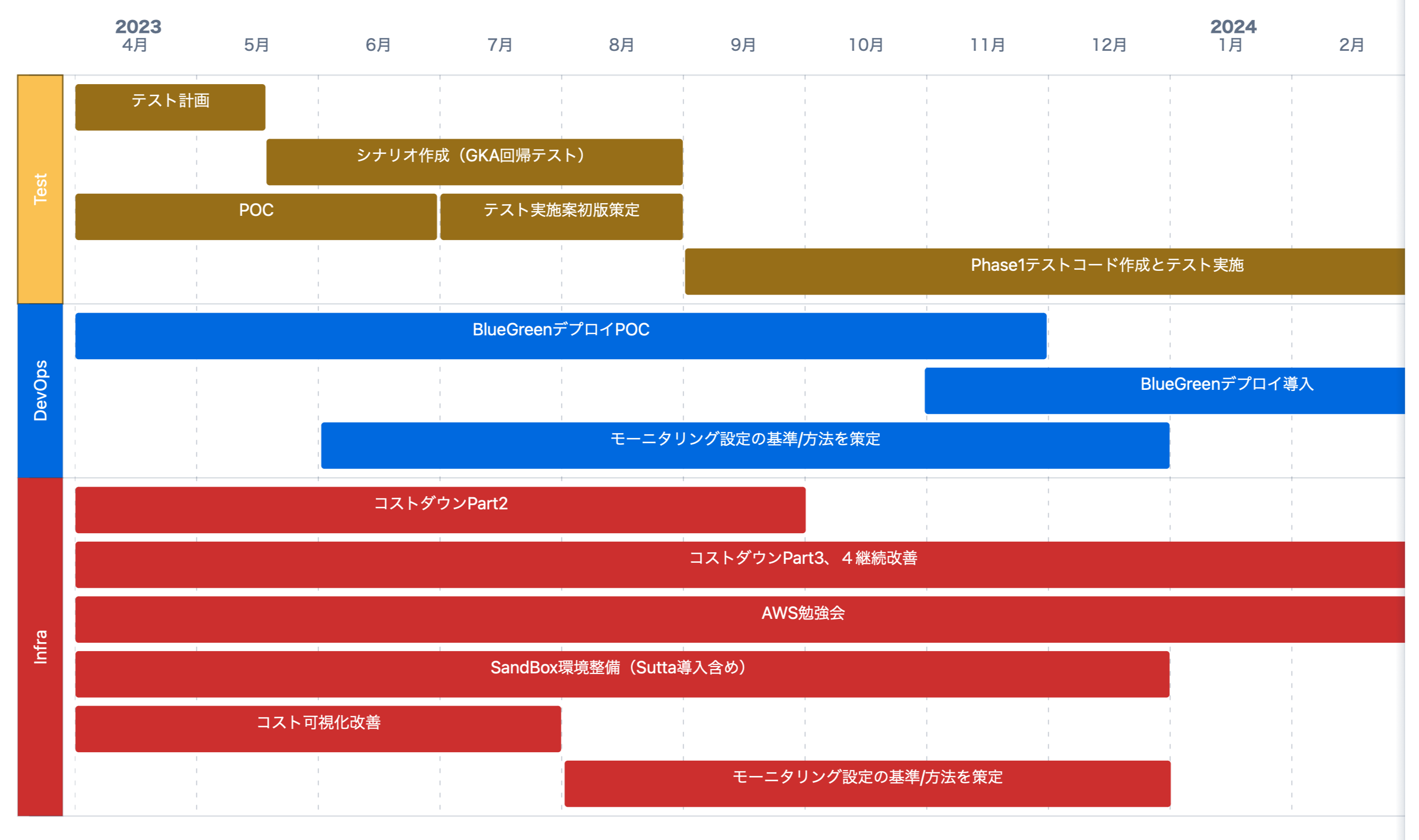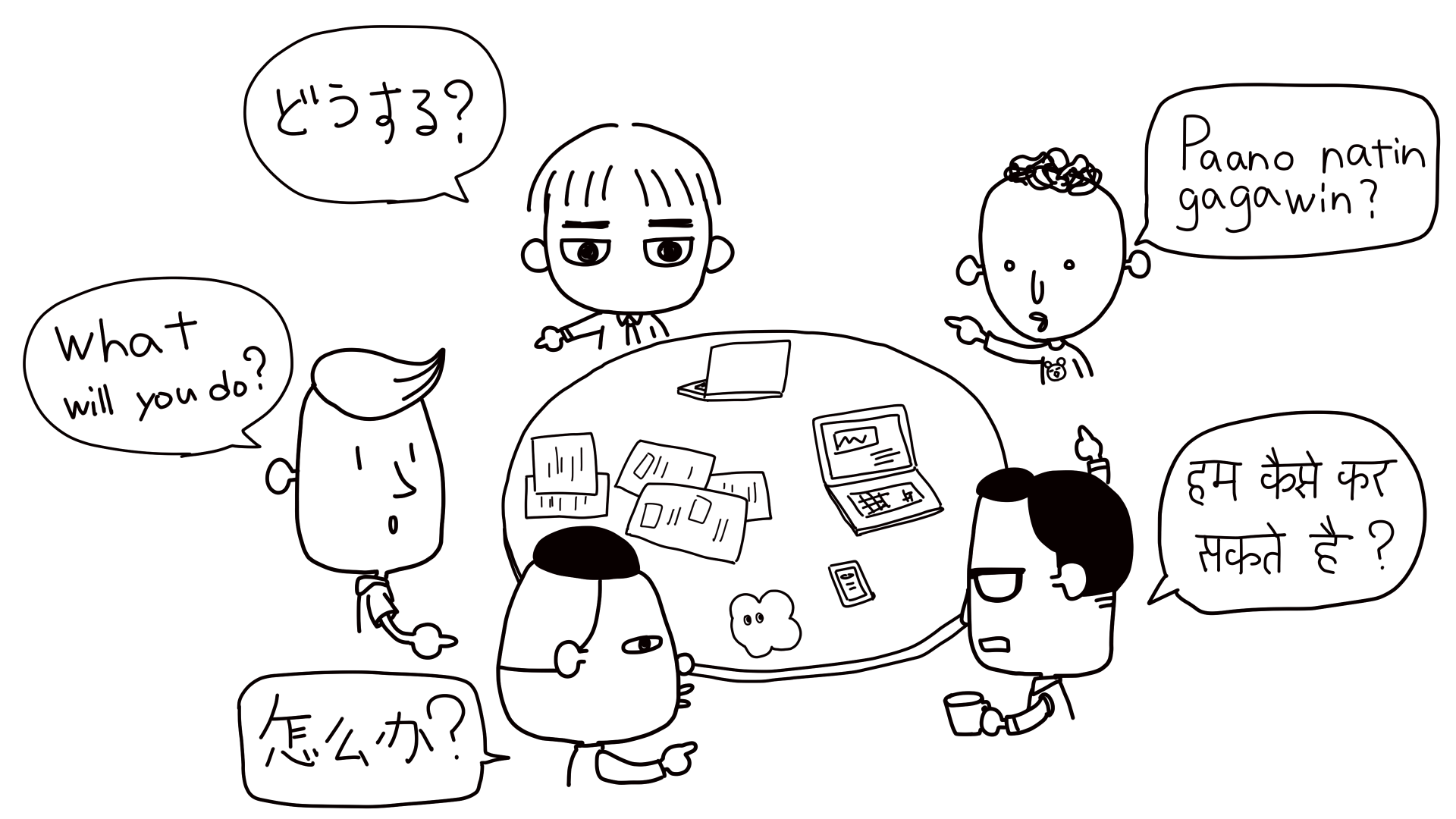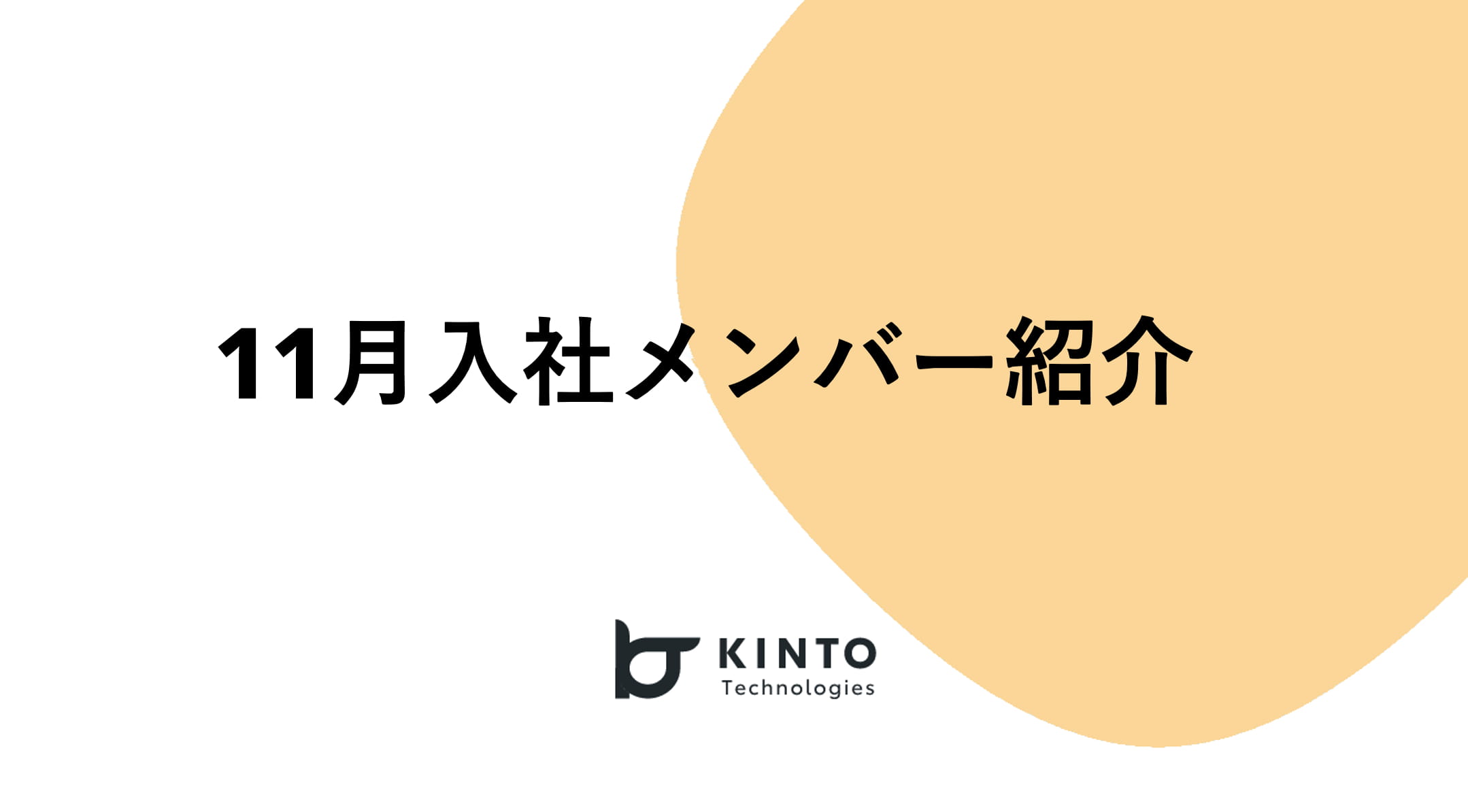As a Mom and a Lead at a Cross-cultural Team

取材対象
KINTOテクノロジーズ内のグローバル開発部には、多国籍で多様な背景を持つDevOpsチームが存在します。
メンバーそれぞれが得意とする言語、技術、経験は異なりますが、チームとしては非常にスムーズに仕事を進められています。
今回は、そのチームリーダーである李さん(Flyway記事の作者 )に取材を行いました。多国籍チームの運営に興味があれば、ぜひご一読ください。
自己紹介とチーム状況紹介
自己紹介
KINTOテクノロジーズグローバル開発部でDevOpsチームリーダーをしています、李です。
卒業後、日本のメーカーのIT子会社で5年間働きました。その間、社内の共通言語が日本語だったため、日本語や日本の文化、さらには異文化とのコミュニケーションスキルを学びました。当時は、Webアプリケーションの開発、設計、評価から始め、システムエンジニアとプロジェクトマネージャーとしての経験を積みました。開発経験だけでなく、開発プロセスとマネジメントの知識も身につけました。
その後、大学で3年間講師を務め、新しい技術と教育学を学びました。これにより、効率的な学習方法についても理解を深めました。
日本に移住した後、次女が保育園に入園したのをきっかけに、IT分野に復職しました。
これまでの異文化コミュニケーションスキルや開発経験、マネジメント能力や人材育成の経験を活かし、現在はグローバル開発部でDevOpsチームのリーダーを務めています。
チーム状況紹介
現在、私たちのDevOpsチームはCI/CD、インフラ、テストの3つのサブチームで構成されています。チーム内6人が下記のように、国籍も専門分野もそれぞれです。
DevOpsチーム設立当初からの理念は、あえて異なるスキルセットを持つメンバーを組み合わせることで、アプリケーション開発チームをサポートすることです。
| No. | サブチーム | 前職経験 | 国籍 | 英語力 | 日本語力 |
|---|---|---|---|---|---|
| 1 | CI/CD | 開発、プロジェクト管理、品質保証、システム設計 | 中国 | B | B |
| 2 | Infra | Infraエンジニア、プロジェクト推進、インテグレーション、設計 | 中国 | C | A |
| 3 | Infra | Infraエンジニア、開発、プリセールス | 中国 | C | B |
| 4 | Test | ネットワークエンジニア、プロジェクト管理 | ニュージランド | A | C |
| 5 | Test | 開発エンジニア | インド | A | C |
| 6 | Test | テスト、開発、設計 | ミャンマー | B | C |
*語学力:
A:細かいニュアンスまで再構成して表現できる
B:幅広い複雑な話題でも議論可能
C:自分の考えとその理由を表現できる
D:日常会話可能
Q&Aコーナー
多様な言語、文化、技術背景を持つチームの日常業務は、想像しにくいかもしれません。
そこで、今回はチームリーダーの李さんにいくつか質問をしてみました。ここではQ&A形式でまとめ、チームの様子を少しでも皆さんに伝えられればと思います。
Q&Aその1
-
質問: チーム内に様々な専門経験を持つメンバーがいる中で、皆をDevOpsチーム共通の目標に向かわせるにはどのようにしていますか?
-
回答: 私たちは、下記のようにチーム内で明確なロードマップを共有し、それに基づいて目標を具体的にし、メンバー全員が同じ方向を目指すようにしています。
チーム内には、品質保証をしたい人、インフラを担当したい人、開発に携わりたい人など、様々な希望を持つメンバーがいます。私たちは、それぞれの強みや志向を理解し、皆が納得できるロードマップの作成に努めています。

ロードマップ(例)
Q&Aその2
-
質問: チーム内の7人は4つの異なる母国語を話します。コミュニケーションにはどの言語を使用していますか?文書やメッセージはどうですか?
-
回答: 口頭でのコミュニケーションや文書の作成は、その人が得意とする言語(英語または日本語)を使用しています。
チーム全員が英語を理解できるため、メッセージは主に英語で送信しています。また、理解を深めるために翻訳ツールの利用も推奨しています。
多言語コミュニケーションでは、発表者がゆっくりと話し、簡単な単語を使用するよう努め、わからないことはすぐに質問する雰囲気を作っています。
Q&Aその3
-
質問: 文化的にも技術的にも多様なチーム内での知識共有はどのように進めていますか?
-
回答: 私たちのチームでは知識共有を重視しており、下記の三つの方法を用いています。
| 期間 | 手段 | 内容 | 目的 |
|---|---|---|---|
| アイスブレーキングフェーズ | 各メンバーの専門分野について知識共有会 | 今までの領域の知識 | お互いに理解し、自身の知識を広げること |
| 配属から一年後 | オンラインコース学習(Udemyにある自動テストツールやマイクロサービスアーキテクチャなどのコース) | 仕事に使うスキルで足りない部分(システムアーキテクチャとか、自動テストツールとか、AWSとか) | 今の仕事上必要なスキルの向上 |
| 随時(異なるタスクが終わった後) | ドキュメント化して残す | 手順やノウハウなど(自動テストのブロック ) | 将来横展開しやすくするため |
Q&Aその4
-
質問: 母親として、異文化間のチームをリードするのは難しいですか?
-
回答: 私が母親であることに対して、チームは非常に理解があり、親切です。グローバル開発部の文化として、多様性を尊重し、互いに敬意を払い、適切な距離感で接しています。自分は小学生の子供を2人持っており、学校行事への参加が必要な時、チームメンバーは日程調整やタスクの再配分を通じてサポートしてくれます。
例えば、最近家族全員がインフルエンザにかかった時、約2週間出勤できませんでしたが、チームメンバーが積極的に業務を引き受け、私の負担を軽減してくれました。
そのサポートにはとても感謝しています。
Q&Aその5
-
質問: 多国籍なチームを管理する際、どのようにして様々な標準(労働倫理やプロフェッショナルな基準など)を統一し、メンバーのモチベーションを維持しつつ、一定水準の成果を出すことができますか?
-
回答: 異文化の合理性を認め、尊重することが重要です。私自身も外国出身であるため、日本と海外の慣行の違いを理解しており、この視点からチームに説明することができます。ここは日本なので、基本的には日本の標準を遵守していますが、外国人の視点からの解説も提供しています。
また、管理学やPMP(プロジェクトマネジメントプロフェッショナル)などの知識を活用し、業界共通のやり方を取り入れています。
チームでは、メンバーに広範な裁量を与え、彼らが望む仕事を行うことでモチベーションを維持することを重視しています。
最後に
-
質問: こういった多国籍なチームをまとめる上で、李さんが一番大事にしていること、または工夫しているところは何ですか?
-
回答: やはりコミュニケーションが最も重要だと思います。PMPの理念に沿っています。私たちのチームでは、皆が明確かつ具体的に自分の考えを伝えることを心掛けています。仕事の中で、いつも「5W1H」を用いてコミュニケーションを取っています。また、異なる考え方にも敬意を払います。基本的に、人々が異なるということを認識した上でコミュニケーションを行っています。
-
質問: チームメンバーからもサポートがもらえるのは信頼があるからだと思います。その秘訣はありますか?
-
回答: 普段の業務では、私自身もメンバーのサポートと指導に意識的に取り組んでいます。メンバーがそれぞれの目標を達成できるよう協力しています。私たちは一つのチームとして、各々が欠かせない一員であり、共に目標達成を目指しているため、リーダー・メンバーというポジションの関わらず、お互いにサポートし合えているのだと思います。やはり素直な心が必要だと思います。
まとめと今後の展望
この記事ではグローバル開発部DevOpsチームのリーダーである李さんにインタビューをし、多国籍なチームでの異文化間コミュニケーションや知識共有の方法、母親とチームリーダーのバランス、そして多国籍なチームのマネジメントなどについて取り上げました。
最後の回答にあったように、多様な背景を持つチームであっても、常に「人は異なる」ということを意識し、異なることに敬意を払い、5W1Hなどを通じて考えをわかりやすく伝える。こういったことの積み重ねによって信頼が生まれ、同じ目標に向かって効率的に互いをサポートし合えることがわかりました。これは決して多国籍なチームだけではなく、同じ国籍であっても同じことではないでしょうか。
多様な背景を持つチームのマネジメントに悩んでいる方にとって、この記事が少しでも参考になると幸いです。
今後、DevOpsチームは事業の展開やテクノロジーの進化に伴い、さらなる挑戦に直面することでしょう。
しかしこれまでの取り組みと、多様性を受け入れられるチームの精神があれば、どんな障害も乗り越えていけると、チームの今後の成功と成長に期待しています。
関連記事 | Related Posts
We are hiring!
【クラウドエンジニア】Cloud Infrastructure G/東京・大阪・福岡
KINTO Tech BlogWantedlyストーリーCloud InfrastructureグループについてAWSを主としたクラウドインフラの設計、構築、運用を主に担当しています。
【クラウドエンジニア(クラウド活用の推進)】Cloud Infrastructure G/東京・大阪・福岡
KINTO Tech BlogCloud InfrastructureグループについてAWSを主としたクラウドインフラの設計、構築、運用を主に担当しています。




